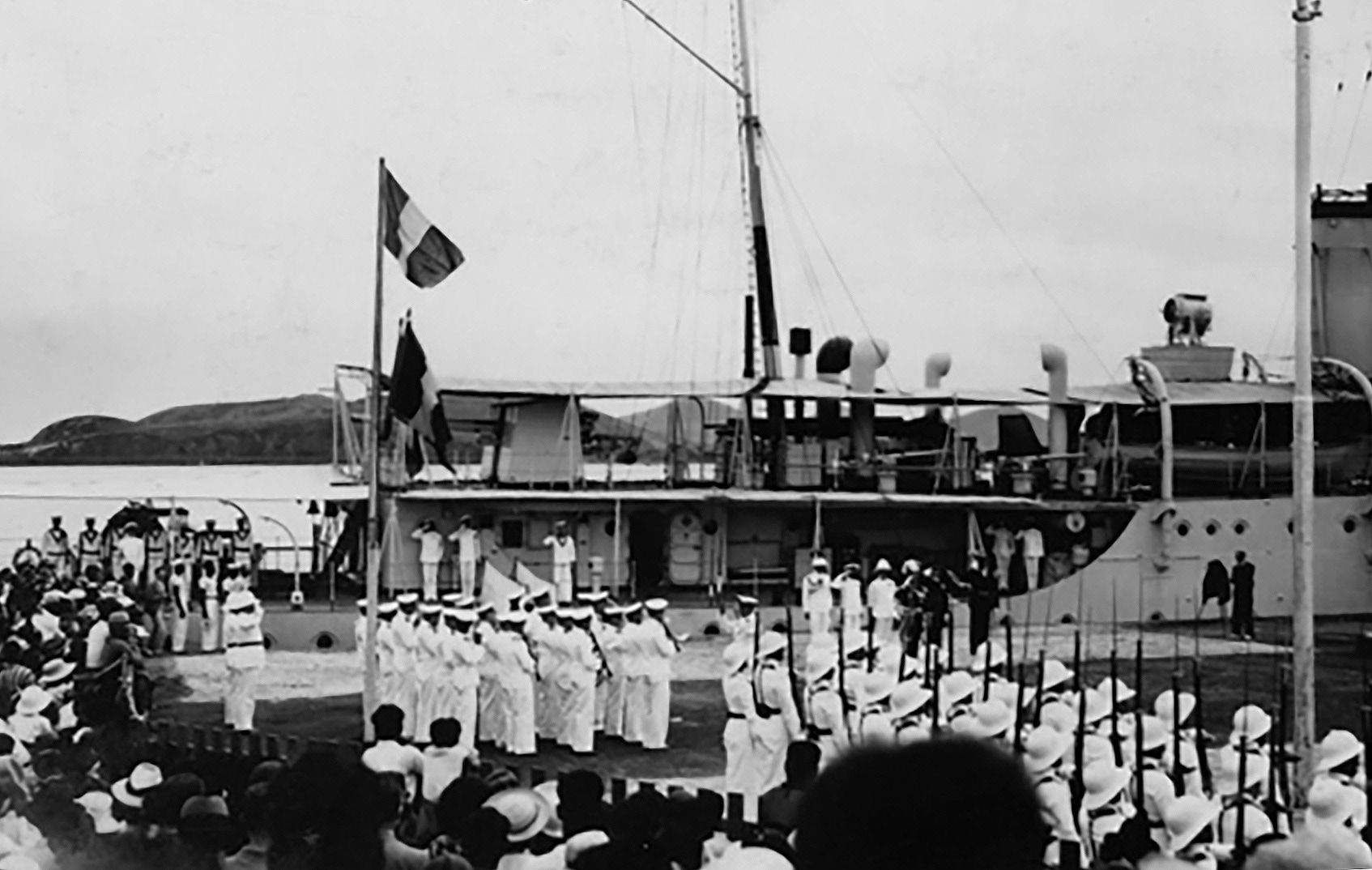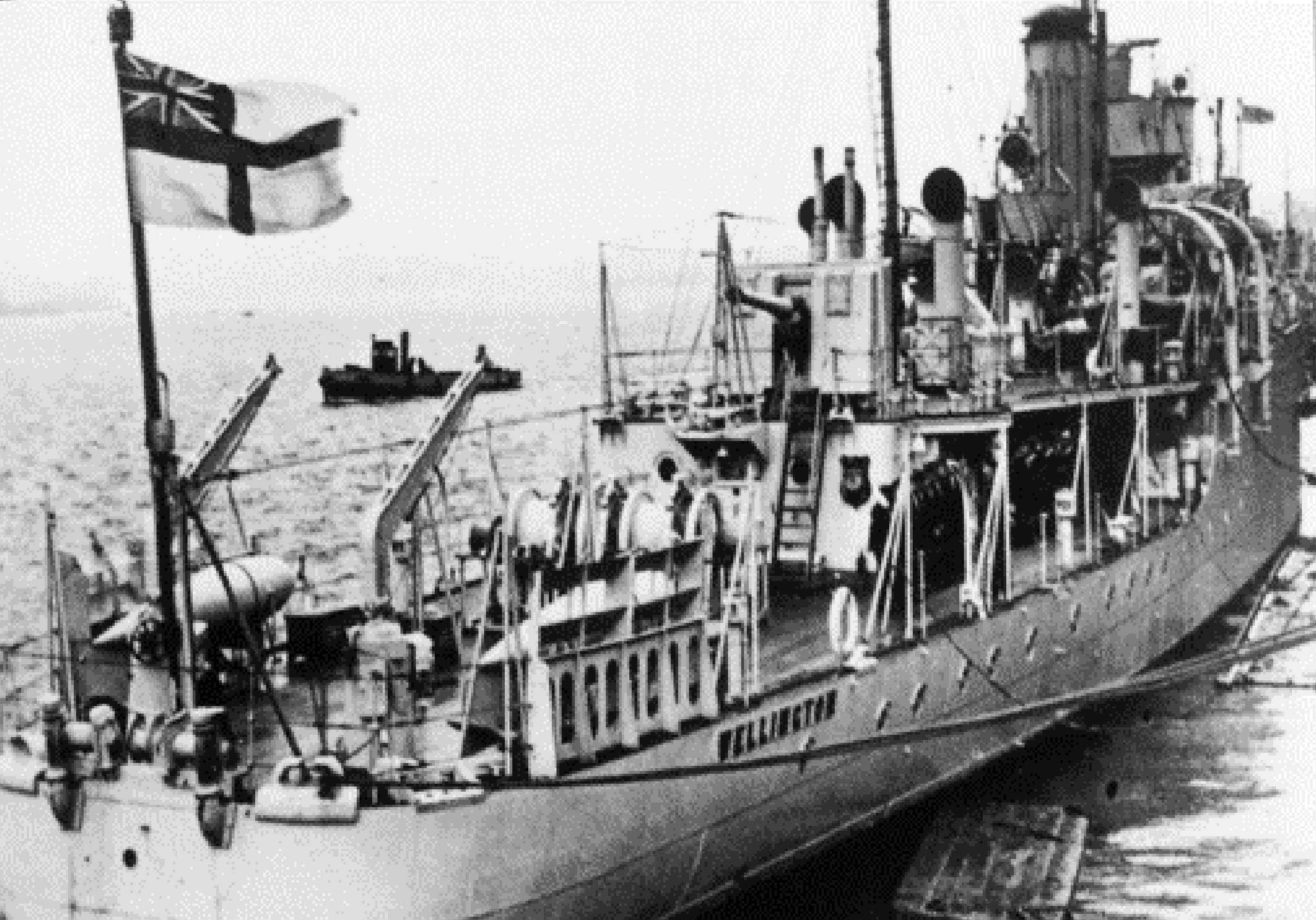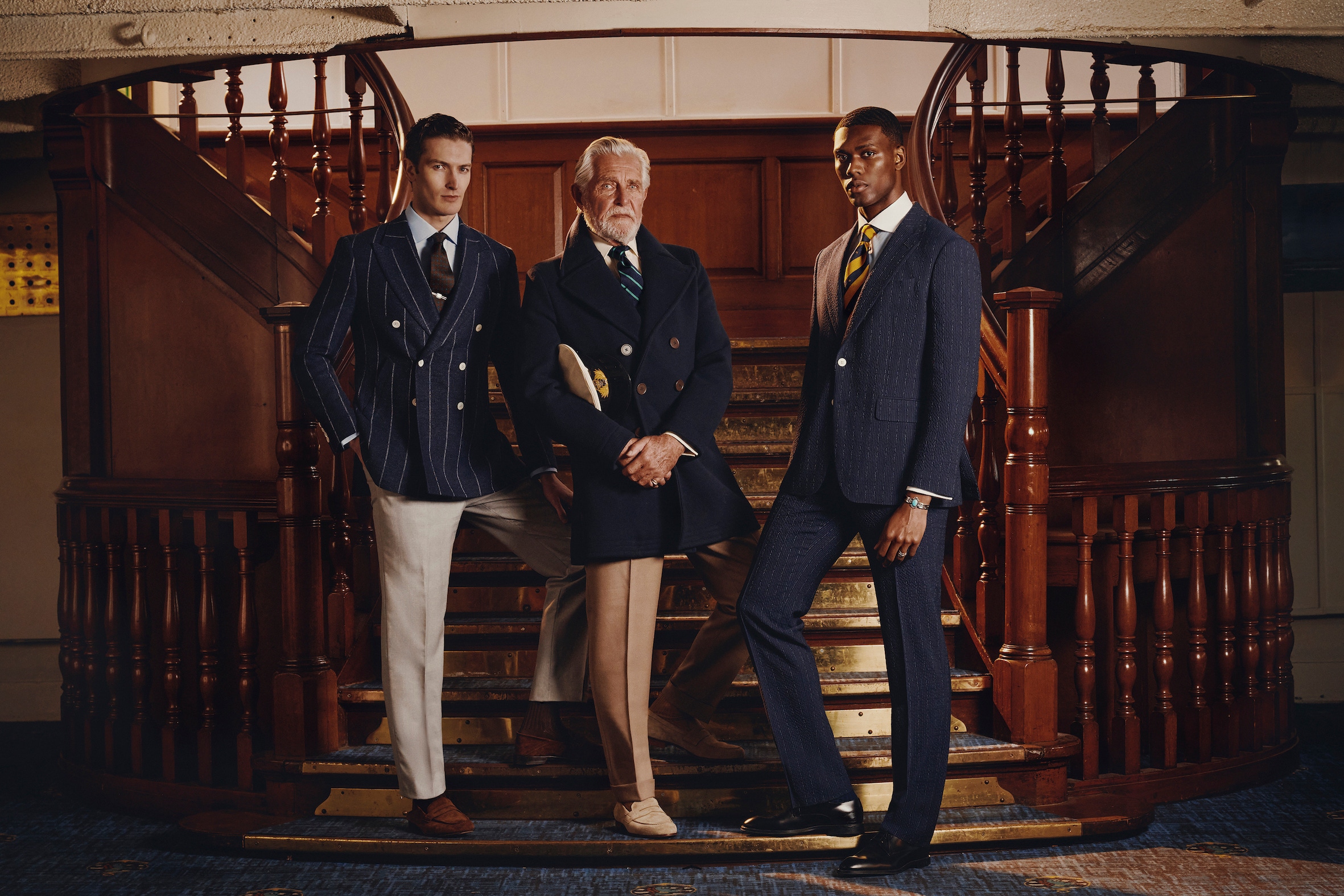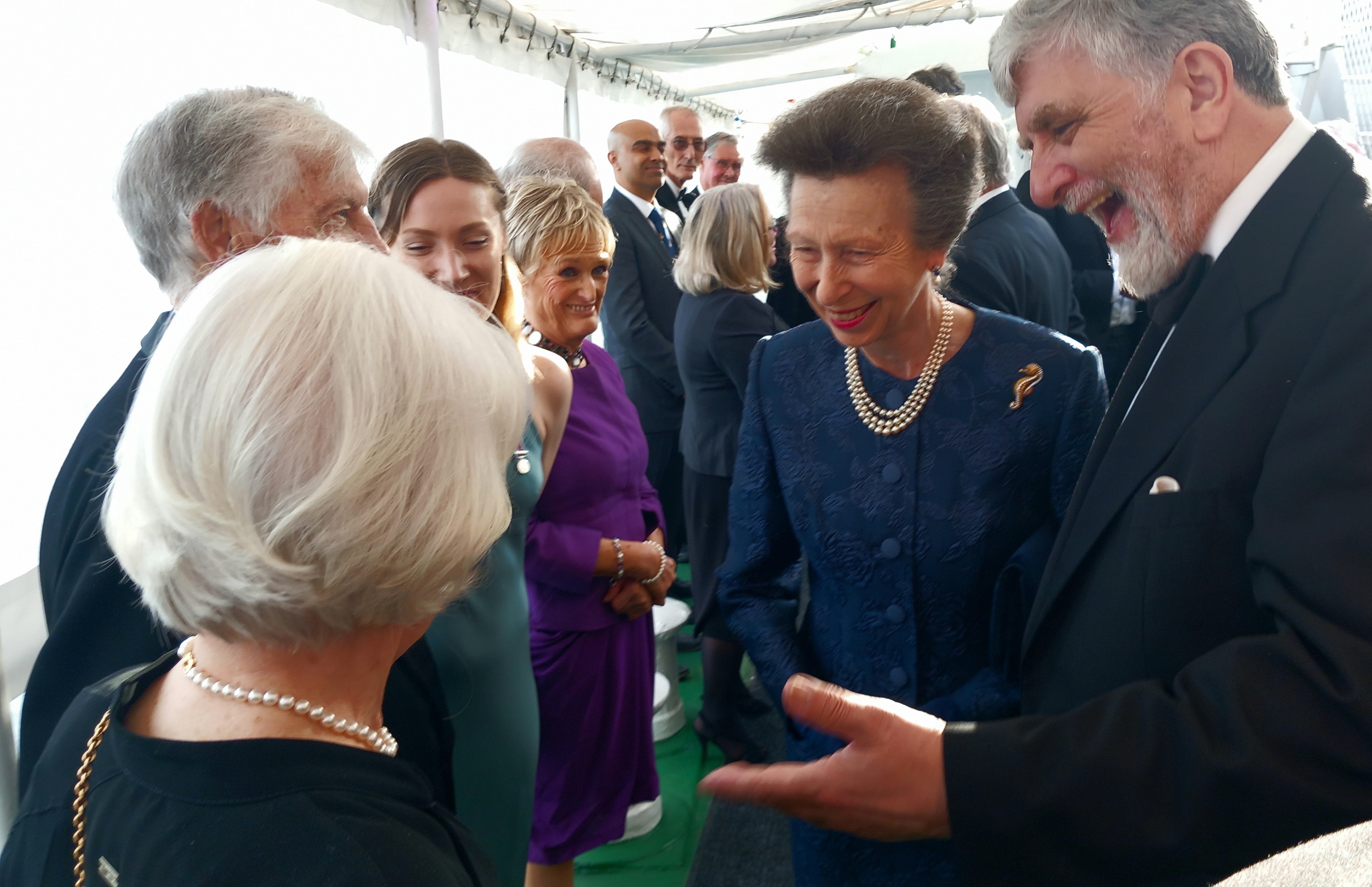From transient to timeless: Honouring HMS Wellington’s 90-year history of British service

Any Londoner strolling along the Thames, perhaps bound for an after-work happy hour, could be forgiven for failing to imbibe the sheer amount of maritime history lining the riverbank. But any reader of The Rake knows better.
One such example is HMS Wellington, a ship built in 1934 and commissioned in 1935 by the Royal Navy for the Royal Navy New Zealand Division to patrol and protect tropical waters in the South Pacific before being recalled to the Atlantic to bolster Allied efforts during world war II. Once a fixture of multiple rescue operations, as well as the site of an interspecies feud (a cat and a monkey doing their civic duty as sources of comfort for a crew member, as it happens), she now resides as an iconic London backdrop, having been moored at Temple Stairs on Victoria Embankment since 1948. As The Rake honours the 80th anniversary of V.E. Day in Issue 99, she serves as one of the capital’s vestiges of a wartime era that feels at once distant, and yet deeply rooted in the public consciousness of modern Britons whose origins are as far-ranging as the vessel’s global footprint.
The Wellington Trust was kind enough to lend The Rake its eponymous venue for its ‘Britain Expects’ fashion feature, which pays homage to the Royal Navy’s role in world war II.


After traversing back to Europe via Singapore and Sierra Leone, HMS Wellington would become a symbol of endurance as the last surviving dedicated Battle of the Atlantic convoy escort vessel in Britain following a total of 103 Atlantic Convoys throughout the war. Her legacy during wartime was additionally entrenched in the militaristic and stylistic changes undergone to fulfil her duty within the convoy, transforming her exterior from the then Royal Navy tropical white and yellow livery, reminiscent of her early days in the Pacific, to a battle grey camouflage, identical to her counterparts.


As the Miracle of Dunkirk dominated headlines in the early summer of 1940, HMS Wellington played a vital role in Operation Cycle, another rescue mission that occurred that same June and entailed the evacuation of members of the British Expeditionary Force from Normandy, granting around 300 soldiers a safe passage back to Dover. This was followed by the rescue of 169 survivors from the sinking of the Royal Mail liner, the Highland Patriot, by a German U-boat in October of the same year, as well as an established presence in the Mediterranean theatre of operations and Operation Torch in North Africa. Churchill famously said of the Battle of the Atlantic, “The only thing that ever really frightened me during the war was the U-boat peril,” and HMS Wellington’s Naval contributions at that time embodied an understated ironclad resistance and resilience that would help to sustain morale until the end of the war.
By the time V.E. Day was declared in the spring of 1945, HMS Wellington had logged 248,578 nautical miles during a war that had dispatched her to most oceans. She was officially decommissioned in 1946 and purchased in 1947 by the Honourable Company of Master Mariners, who turned her into a floating livery hall and renamed her the Headquarters Ship (HQS Wellington). She was subsequently divested of all armaments and outfitted with a courtroom and anteroom, as well as a grand staircase from the SS Viper, an Irish Sea passenger ferry that was utilised as a troopship during world war I. This addition serves as another physical reminder of the vessels’ shared history of protecting the British Isles.


In 2005, ownership of HQS Wellington was transferred to the Wellington Trust, a registered charity that preserves and maintains the ship for future generations, hosting various onboard educational programmes for the public, schools and colleges. To support this work and her conservation, HMS Wellington can also be hired as a unique event venue. Following gracious approval by His Majesty The King, HQS Wellington was renamed HMS Wellington in September 2024 to mark the 85th anniversary of the beginning of the Battle of the Atlantic.


Photo credits: The Wellington Trust
Oli, Bernard and Ruben photographed onboard HMS Wellington for Issue 99 of The Rake.
